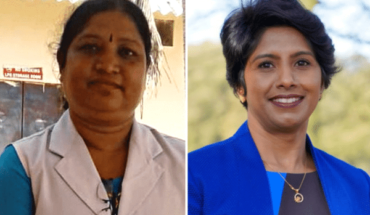· As per reports one case per secont around the world, South Asia has most child sexual abuse
· Interpol warns, Survivors demand action on “Global Health Emergency”
London: Over 300 million children are victims of online sexual abuse and exploitation annually, with South Asia triggering the highest number of child sexual abuse material (CSAM) alerts. These findings come from the first global estimate of the crisis by university researchers.
With files containing sexual images of children reported every second worldwide, researchers highlighted that pupils “in every classroom, in every school, in every country” are affected by this “hidden pandemic.”
This data appears in a ground breaking report by the Childlight Global Child Safety Institute at the University of Edinburgh, Scotland.
It indicates that 12.6% of the world’s children, about 302 million, have been victims of non-consensual taking, sharing and exposure to sexual images and video in the past year. Additionally, 12.5% of children globally have been subjected to online solicitation, such as unwanted sexual talk, non-consensual sexting and unwanted sexual act requests by adults or other youths. Offences include “sextortion” and abuse of AI deepfake technology.
One child grooming survivor emphasised the need for stronger regulation to hold social media platforms accountable, especially as end-to-end encryption makes detecting offenders more difficult.
Childlight’s global index, Into the Light, found South Asia accounts for about one-third of all alerts by online watchdogs for CSAM hosting or uploading, followed by East Asia and Pacific, which account for one-fifth of reports. However, these regions also hold 54% of the world’s population.
Standardising findings by population size, North America and Western Europe are in the top three regions for the highest CSAM rate, following the Middle East and North Africa.
Studies in East Asia and Pacific, including Australia, Malaysia and the Philippines, found past year prevalence for online sexual solicitation of children to be 13%. However, data for South Asia is sparse, with researchers calling for urgent efforts to fill this gap.
New data from the National Center for Missing and Exploited Children (NCMEC) revealed 8.9 million alerts for CSAM in India last year, with 2.5 million for Bangladesh and 1.9 million for Pakistan.
Childlight CEO Paul Stanfield said: “This is a global health pandemic that has remained hidden for far too long. It occurs in every country and is growing exponentially. We need to act urgently and treat it as a public health issue that can be prevented. Children can’t wait.”
Debi Fry, professor of international child protection research at the University of Edinburgh, said: “The world needs to know these atrocities are affecting children in every classroom, in every school, in every country. These aren’t harmless images: they are deeply damaging, and the abuse continues with every view and the failure of taking down this abusive content.”
Interpol’s executive director, Stephen Kavanagh, said: “Online exploitation and abuse is a clear and present danger to the world’s children, and traditional law enforcement approaches are struggling to keep up. We must do much more together at a global level.”
Frida*, a survivor of online child sexual abuse, said: “It was a deeply isolating experience. I felt ashamed, and that I had done something wrong. Childlight’s figures show that not only am I not alone in my experiences, but that more and more children are experiencing horrific abuse and exploitation online each day. We need ambitious regulation to hold tech platforms to account.”
Grace Tame, another survivor who leads the Grace Tame Foundation, said: “Child sexual abuse is a global public health crisis that is steadily worsening thanks to advancing technologies. A centralised global research database is essential to safeguarding children.”
Based on original research and analysis of 125 studies and over 36 million reports to five main watchdog and policing organisations, the report found:
- The Middle East and North Africa region receives most alerts about CSAM per head of population (9 reports per 1,000 people).
- One in four children (25.5%) in Eastern and Southern Africa report experiencing online solicitation at some point, with 20.4% experiencing it in the past year.
- Eastern Europe and Central Asia report high prevalence of non-consensual sharing and exposure to sexual images and videos (20.2%), second only to North America (23%).





